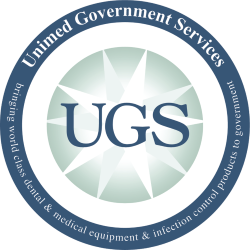 |
 |
 |
|
Home > Resources > Frequently Asked Questions (FAQs) > Office Design & Management > Question & Answer TOP What are the best recommended countertops for a sterilization area? Is stainless steel good? As a matter of policy, Ask OSAP does not review, evaluate, certify, recommend or endorse products. Ask OSAP can provide you with some general information pertaining to instrument processing areas. The 2003 CDC guidelines for infection control in dentistry states the following regarding the instrument processing area: Instrument Processing Area Receiving, Cleaning, and Decontamination If manual cleaning is not performed immediately, placing instruments in a puncture-resistant container and soaking them with detergent, a disinfectant/detergent, or an enzymatic cleaner will prevent drying of patient material and make cleaning easier and less time-consuming. Use of a liquid chemical sterilant/high-level disinfectant (e.g., glutaraldehyde) as a holding solution is not recommended (244). Using work-practice controls (e.g., long-handled brush) to keep the scrubbing hand away from sharp instruments is recommended (14). To avoid injury from sharp instruments, DHCP should wear puncture resistant, heavy-duty utility gloves when handling or manually cleaning contaminated instruments and devices (6). Employees should not reach into trays or containers holding sharp instruments that cannot be seen (e.g., sinks filled with soapy water in which sharp instruments have been placed). Work-practice controls should include use of a strainer-type basket to hold instruments and forceps to remove the items. Because splashing is likely to occur, a mask, protective eyewear or face shield, and gown or jacket should be worn (13). 1 The full document can be accessed at: Regarding design of the instrument processing area, Infection Control and Management of Hazardous Materials for the Dental Team states in part: The cabinetry should include chemical- and heat resistant countertops wide enough for sterilizers and other equipment….2 Section 3.3.6.1.2 Space Considerations of ANSI/AAMI ST79:2017 (Comprehensive guide to steam sterilization and sterility assurance in health care facilities) states: The decontamination room/area should include designated space for: k) work tables made of nonporous materials (e.g., stainless steel); 3 No direct reference was found for cabinetry. Resources 1) Kohn WG, Collins AS, Cleveland JL, Harte JA, Eklund KJ, Malvitz DM, Centers for Disease Control and Prevention (CDC). Guidelines for infection control in dental health-care settings—2003. MMWR Recomm Rep 2003;52(RR-17):1-61. http://www.cdc.gov/mmwr/preview/mmwrhtml/rr5217a1.htm Accessed on March 6, 2020. 2) Miller CH. Infection Control and Management of Hazardous Materials for the Dental Team, 6th edition. Elsevier/Mosby Publishers. Pages 133-135. 3) Association for the Advancement of Medical Instrumentation. ANSI/AAMI ST79:2017: Comprehensive guide to steam sterilization and sterility assurance in health care facilities. Page 22.
|
|
| Last Updated on Monday, June 28, 2021 04:44 PM |


